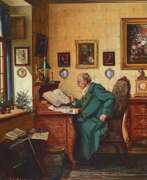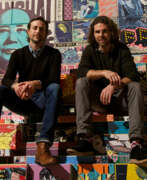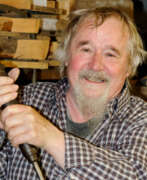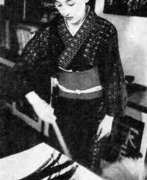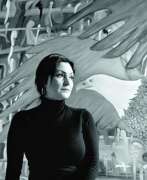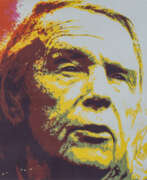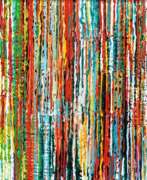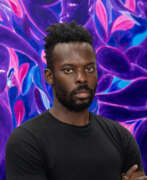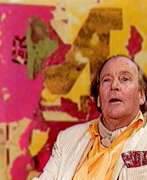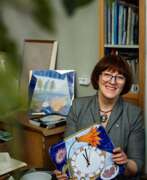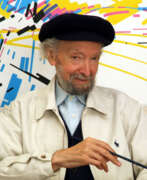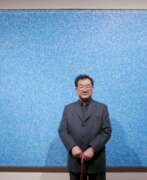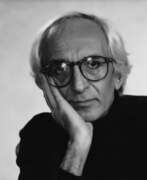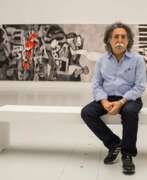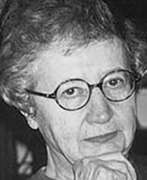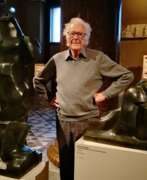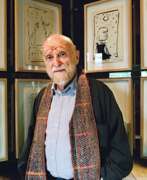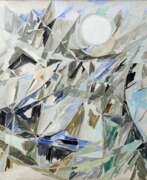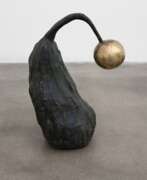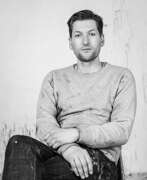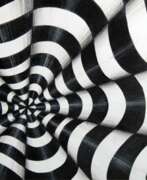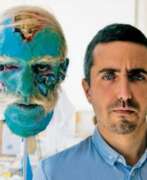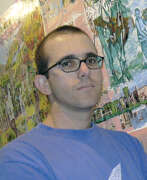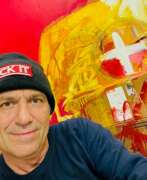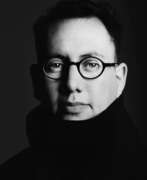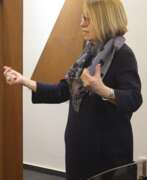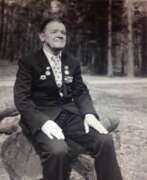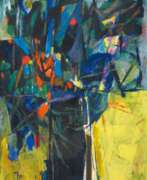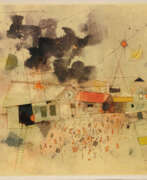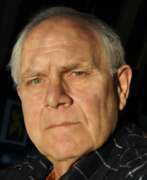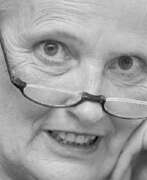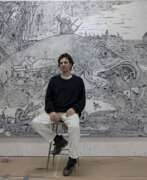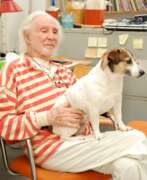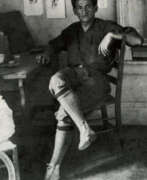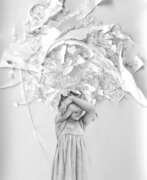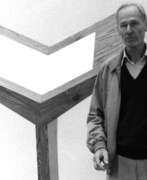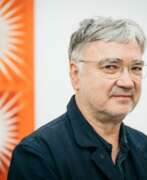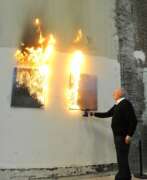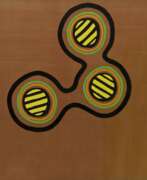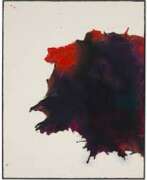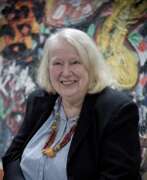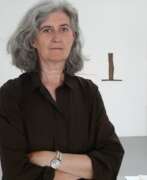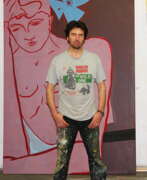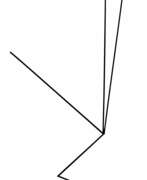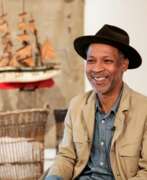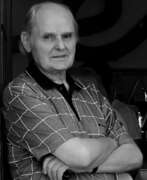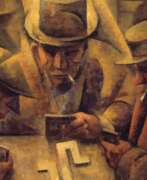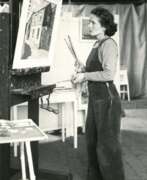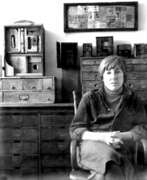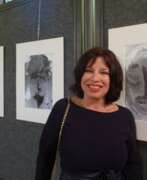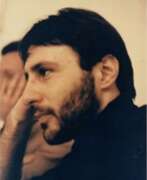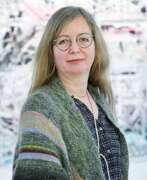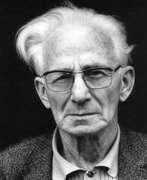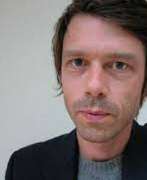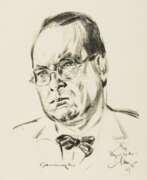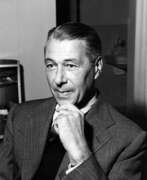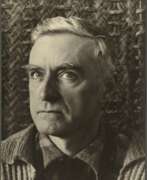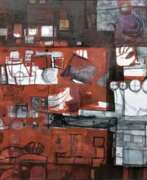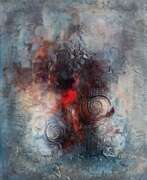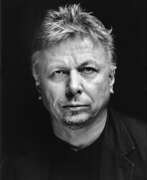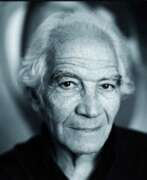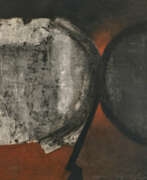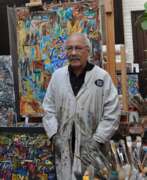Abstract art
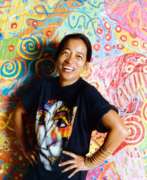

Pacita Abad was a renowned Filipino artist, celebrated for her vibrant and colorful artwork that showcased her deep engagement with global cultures and social issues. Born in 1946 in Batanes, Philippines, into a politically active family, Abad's life took a significant turn when she decided to abandon her law studies in favor of art, influenced by her interactions and travels across the globe. This decision led her to explore various art forms and techniques, including trapunto painting—a method where canvases are stitched and padded to create a three-dimensional effect.
Abad's art was profoundly influenced by her extensive travels with her husband, Jack Garrity, through more than 60 countries, where she not only collected textiles but also immersed herself in local cultures. This exposure is vividly reflected in her works, which often incorporate traditional fabrics and objects, such as beads and shells, integrating them into her colorful abstract and figurative paintings.
Throughout her career, Abad's works were displayed in over 200 museums and galleries worldwide, including prestigious venues like Tate Modern and the Museum of Modern Art (MoMA) PS1. Her work not only celebrates the visual and cultural diversity she encountered but also addresses global and humanitarian issues, such as the plight of refugees, which she depicted through intimate and powerful portraits of women and children.
Pacita Abad's legacy continues to inspire and influence the art world, highlighting her role as an "ambassador of colors" whose works helped to "make the world smile" with their exuberance and vibrancy. If you're interested in learning more about her life and work, consider signing up for updates on exhibitions and sales related to her art. This will keep you informed about opportunities to engage with and perhaps collect pieces from the oeuvre of this groundbreaking artist.
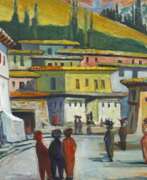

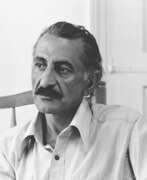

Shafic Abboud, also known as Chafic Abboud, was a renowned Lebanese painter whose artistic journey led him from Beirut to the vibrant art scene of Paris in 1947. Embracing the modernist and abstract movements of the mid 20th century, Abboud honed his skills at the ateliers of prominent artists like Jean Metzinger and Fernand Léger. This exposure influenced his transition from figurative and landscape painting to his signature colorful personal abstractions. Despite his years in France, Abboud remained deeply connected to his oriental roots, drawing inspiration from oral storytelling and Byzantine icons.
Abboud´s creativity extended to ceramics, terracotta, carpets, and lithography. His exceptional talent garnered global recognition, with exhibitions in prestigious venues like Doha's Mathaf and Paris's Institut du Monde Arabe. In May 2012, Beirut Exhibition Center celebrated his artistic legacy in a comprehensive exhibition.
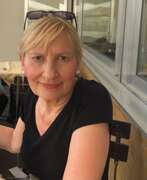

Margitta Abels is a German artist known for her abstract paintings and mixed media works.
Margitta Abels has received numerous awards and honors for her work.
Abels' work is characterized by its use of color and texture to create complex and layered compositions. She often works with a variety of materials including acrylic paint, charcoal, and collage elements, and her work often incorporates textural elements such as sand and fabric.
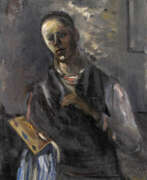

Alfred Aberdam was a Polish painter associated with the School of Paris, known for his participation in the artistic movements of the early 20th century. Born in Lviv, then part of the Austro-Hungarian Empire, Aberdam's journey in the arts began with his studies at the Munich Academy in 1911. His life and work were marked by significant historical events, including imprisonment during World War I and an active period in Poland's art scene before settling in Paris. Aberdam's contributions are remembered through his numerous exhibitions, including solo showcases in Paris, London, and Tel-Aviv, as well as posthumous retrospectives like the one in Geneva's Petit Palais in 1970.
Aberdam's works reflect the cultural dynamism of the School of Paris, capturing a confluence of influences that characterized the European art scene. Despite being somewhat lesser-known, his paintings have been traded at auction, reflecting a continued interest and recognition of his artistic legacy. His art remains an important part of the narrative of Jewish painters in Paris from 1905 to 1939, contributing to our understanding of the era's artistic diversity.
For collectors and experts in art and antiques, Aberdam's work embodies the intricate history and cultural exchanges of the early 20th century European art world. His paintings not only represent his individual talent but also tell the story of the times in which he lived, worked, and created. Understanding Aberdam's art is a journey through the cultural melting pot that was Paris during a pivotal period in modern art history.
For those interested in exploring the legacy and works of Alfred Aberdam further, or seeking to keep abreast of new product sales and auction events related to his work, subscribing for updates is invaluable. Stay informed on the latest developments and opportunities to appreciate or acquire pieces by this notable artist. Subscribe now to ensure you are alerted to new sales and auction events featuring the esteemed Alfred Aberdam.
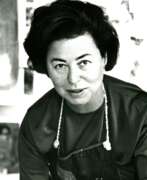

Ruth Davidson Abrams, a Jewish-American painter, left a lasting impact on the art world. As the art director at the Research Association of The New School and a lecturer at Parsons The New School for Design, she influenced aspiring artists.
Abrams gained recognition for her outer-space-themed paintings, notably "There Are Unknown Elements in the Universe as Old as Mankind" (1962). She actively engaged in art classes led by influential artists like Alexander Archipenko and William Zorach, known for their abstract approach. Despite being overlooked in a male-dominated era, Abrams' talent is now acknowledged. Her papers are preserved at the Yeshiva University Museum and the Smithsonian Archives of American Art. She collaborated with renowned artists such as William Zorach, Alexander Archipenko, and John D. Graham.
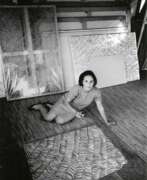

Carla Accardi was an Italian abstractionist painter associated with the Arte Informel and Arte Povera movements and a founding member of the art groups Forma (1947) and Continuità (1961). She studied painting at the Academy of Fine Arts in Palermo and Florence.
Carla Accardi was known for her innovative use of materials and her exploration of geometric shapes and vivid colours. One of her notable contributions was the introduction of the "tela intrecciata" (interwoven canvas) technique, in which she used strips of coloured canvas to create textured and layered compositions.
Accardi's work often exhibited a sense of rhythm and movement, a dynamic arrangement of forms and lines. Her compositions are characterised by a sense of balance and harmony and often incorporate elements of repetition and symmetry.


Franz Ackermann is a German media artist.
He studied at the Academy of Fine Arts in Munich and at the University of Fine Arts in Hamburg, lives and works in Berlin and Karlsruhe.
Franz Ackermann's work includes drawings, watercolors, murals, paintings and installations, which he complements with photographic works, projections and architectural models. His works deal with the themes of tourism, globalization and urbanism and reflect the social changes and political problems caused by increasing globalization.
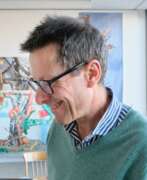

Urs Aeschbach is a Swiss media artist working in various techniques. Nature is always a pictorial theme in Urs Aeschbach's paintings. Her main characters are mushrooms, woody plants, animals, jellyfish, as well as dogs and horses. The artist's paintings are inspired by photographs and illustrations. In addition to paintings, Eschbach creates art and construction projects, video works, as well as constructions and installations.
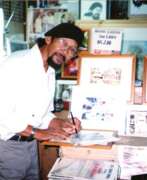

Abdul Ghani Ahmad is a contemporary Malaysian artist. He is known as a watercolorist working in the styles of realism and abstraction.
Abdul Ghani Ahmad creates landscape and rural landscapes as well as abstractions. His work is characterized by photographic precision and detail. Some of the artist's best known works include the Pristine Nature, Journey and Flora of Malaysia series. He has also produced a series of postcards with views of Malaysia.
Ahmad is a member of various art organizations including the Asian Watercolorists Confederation and the Malaysian Artists Union.
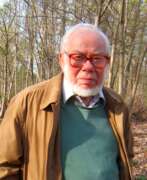

Wolfram Aïchele was an artist from Baden-Württemberg in Southern Germany, son of renowned animal artist Erwin Aichele. After training as a sculptor, he studied religious and Byzantine art, drawing inspiration from his pilgrimage to Serbia, Kosovo, Macedonia, and Mount Athos. Aïchele focused on painting icons using egg tempera, aiming to revive the pure iconographical style corrupted in the 19th century. He later moved to Paris, where he explored various influences such as Eastern European folk art, Persian miniatures, and modern artists like Chagall and Klee. Aïchele's work transitioned to a unique blend of figurative and abstract art, primarily expressed through watercolors and painted collages.
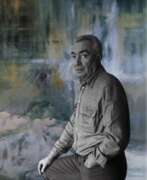

Giuseppe Ajmone was an Italian painter and printmaker.
He studied painting at the Brera Academy of Fine Arts in Milan and in 1946 was one of the signatories of the Realist Manifesto, also known as "Oltre Guernica.
Ajmone painted both landscapes and still lifes as well as semi-abstract figures.
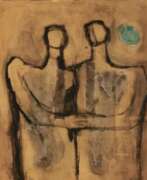

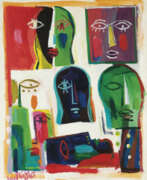

Saleh al-Jumai'e is an Iraqi artist noted for his works that explore the notion of tracks left by ancient heritage. His works often integrate Arabic calligraphy in an abstract artwork. Al-Jumaie and his cohort became the group of artists that defined 1960s Iraqi art. Although al-Jumaie is best remembered as a painter, he also designed posters and produced a number of book covers. His early work features Arabic lettering, but over time the calligraphy became fainter. His interest in exploring new media and materials was maintained throughout his career. The idea of tracks left by tradition is a theme that Jumaie takes up in much of his work. For example, Pages from Old Books is a series of mixed media artworks that creates an illusion of surfaces on which fragments of script have been written.
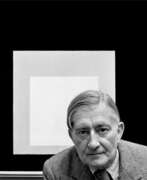

Josef Albers was a German-born artist and educator. The first living artist to be given a solo shows at MoMA and at the Metropolitan Museum of Art in New York, he taught at the Bauhaus and Black Mountain College, headed Yale University's department of design, and is considered one of the most influential teachers of the visual arts in the twentieth century.
As an artist, Albers worked in several disciplines, including photography, typography, murals and printmaking. He is best known for his work as an abstract painter and a theorist. His book Interaction of Color was published in 1963.
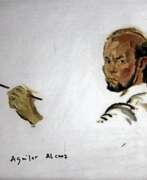

Frederico Aguilar Alcuaz is a Filipino abstract painter, sculptor and ceramist, and master tapestry artist.
He studied painting at the University of the Philippines' School of Fine Arts, then lived and worked both in the Philippines and Spain, and in Brno, Czech Republic, he worked extensively on tapestries.
Alcuaz has earned international acclaim with his vivid abstract works in various genres and techniques, and he has exhibited extensively internationally.
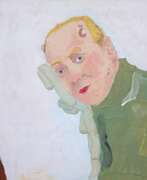

Richard Aldrich is a Brooklyn-based contemporary American conceptual artist and painter who exhibited in the 2010 Whitney Biennial. Aldrich received his BFA degree from the Ohio State University in 1998. Although mostly abstract and casual, Aldrich's paintings also betray a distinctly literary sensibility, even as he targets what he has called the essential "unwordliness of experience." He addresses his own personal history and the way that humans organize information through the formal language of painting, freely citing various aesthetic tropes with humor and irreverence. Aldrich is best known for his loose, abstract compositions, moving freely from gestural mark-making, text-based printing, and cutting the canvas to reveal stretcher bars underneath.
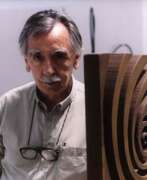

Andreu Alfaro Hernández was a Spanish sculptor.
Alfaro learned the principles of geometry and applied his knowledge to create abstract works. His sculptures are usually full of nuances that play with the module, the series and light and color. He was also described as a minimalist artist, albeit with reservations.
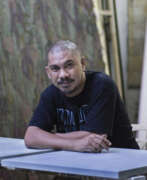

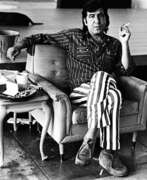

John Altoon was an American painter and representative of Abstract Expressionism. He was an important figure in Los Angeles art in the 1950s and 1960s.
He studied at the Otis Art Institute and simultaneously attended the Los Angeles Art Centre College of Design. Known for figurative works, he was a member of the Ferus group with Edward Kienholz and Robert Irwin. He suffered from schizophrenia from an early age and in fits of depression and paranoia destroyed some of his work.
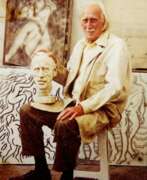

Harold Ambellan is an American painter and sculptor.
He studied sculpture and fine art in Buffalo before moving to New York City. The human figure is central to Harold Ambellan's work. He created monumental figures and drew extensively, leaving thousands of drawings. Ambellan was one of the participants in Roosevelt's Federal Art Project, which hired hundreds of artists during the Great Depression who collectively created more than 100,000 paintings and over 18,000 sculptures.
Ambellan remained committed to figuration in both his sculpture and painting. He was elected president of the Sculptors Guild of America in 1941, and that same year his work was exhibited in group shows at the Metropolitan Museum of Art in New York and the Academy of Fine Arts in Philadelphia.
In 1944, Ambellan participated in the liberation of Normandy as part of the U.S. Navy, then taught three-dimensional art at the Workshop School in New York City. In 1954, for political reasons, Ambellan moved to France and remained there for the rest of his life, working and exhibiting throughout Europe.
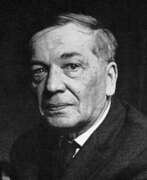

Mikhail Fedorovich Andrienko-Nechytailo (Russian: Михаил Фёдорович Андриенко-Нечитайло) was a Russian artist known for his contributions to the avant-garde movement. Born in 1894, he became renowned for his innovative approach to painting, stage design, and illustration. Andrienko-Nechytailo’s work is celebrated for its unique blend of Constructivism and Cubism, which set him apart from his contemporaries.
One of his special features was his ability to combine geometric forms with a vibrant color palette, creating visually striking compositions that challenged traditional artistic conventions. His works often explored themes of abstraction and the intersection of art and technology. His notable pieces are housed in prestigious collections, including the Tretyakov Gallery in Moscow and the Russian Museum in Saint Petersburg.
Collectors and art experts admire Andrienko-Nechytailo for his visionary approach and lasting impact on modern art. His legacy continues to influence contemporary artists and is a testament to his skill and creativity.
Sign up for updates on new product sales and auction events related to Mikhail Fedorovich Andrienko-Nechytailo. Stay informed about opportunities to add his remarkable works to your collection.
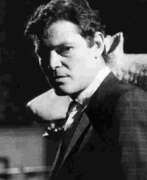

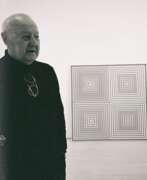

Richard Joseph Anuszkiewicz was a prominent American artist celebrated for his foundational contributions to the Op Art movement. Born in Erie, Pennsylvania, to Polish immigrant parents, Anuszkiewicz's early talent in art earned him scholarships, leading to his studies at the Cleveland Institute of Art and later, the Yale University School of Art and Architecture under Josef Albers. Albers, a pivotal figure in his career, inspired Anuszkiewicz to explore the intricacies of color and geometric forms, steering him away from realism towards a more abstract and mathematical approach to art.
Anuszkiewicz gained prominence in the 1960s, notably through his participation in the landmark exhibition "The Responsive Eye" at MoMA, which played a crucial role in propelling Op Art into mainstream recognition. His works, characterized by vibrant colors and geometric patterns, create illusions of depth and movement, challenging viewers' perceptions and offering a mesmerizing visual experience. His technique was not just about the visual impact; it was a meticulous, mathematical exploration of color and form, aiming to achieve a 'very, very mechanistic geometry' that was nonetheless romantic in its precision and purity.
Throughout his career, Anuszkiewicz's art evolved, yet he remained faithful to his intellectual and analytical approach, focusing on the optical effects of color and shape. His contributions extended beyond painting to include printmaking and sculpture, showcasing his versatility as an artist. Notably, his works are housed in prestigious collections around the world, including the Metropolitan Museum of Art, Museum of Modern Art, and the Whitney Museum of American Art, among others.
For collectors and experts in art and antiques, Anuszkiewicz's work embodies the confluence of scientific precision and artistic expression, offering insights into the profound impact of color and form on human perception. His legacy continues to inspire and challenge the boundaries of visual art.
If you're captivated by the transformative power of Op Art and the pioneering work of Richard Joseph Anuszkiewicz, sign up for updates. Stay informed about new product sales and auction events related to this remarkable artist's oeuvre, enriching your collection with pieces that resonate with history and innovation.
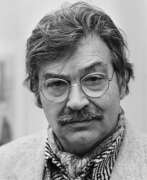

Christiaan Karel Appel was a Dutch painter, sculptor, and poet. He started painting at the age of fourteen and studied at the Rijksakademie in Amsterdam in the 1940s. He was one of the founders of the avant-garde movement CoBrA in 1948. He was also an avid sculptor and has had works featured in MoMA and other museums worldwide.
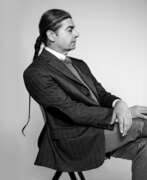

John Armleder is a Swiss performance artist, painter, sculptor, critic, and curator. His work is based on his involvement with Fluxus in the 1960s and 1970s, when he created performance art pieces, installations and collective art activities that were strongly influenced by John Cage. However, Armleder's position throughout his career has been to avoid associating his artistic practice with any type of manifesto.
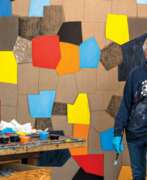

Charles Arnoldi is an American painter, sculptor and printmaker.
In the early 1970s, the artist attracted attention for his wall-relief wood sculptures, such as Honeymoons in the collection of the Honolulu Museum of Art.
The use of wood remained a feature of Arnoldi's oeuvre, although, since the 1980s, he has often employed it in combination with other media. In the 1990s, Arnoldi's output changed radically. He began producing abstract paintings on canvas, first black and white, and later brightly colored.
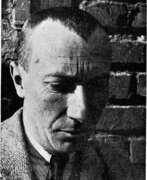

Jean Arp, born Hans Peter Wilhelm Arp, was a German and French poet, painter, graphic artist and sculptor. one of the founders of the Dada movement in Zurich.
Arp used abstract forms in his work and experimented with different materials such as wood, metal and stone. He was also known for his poetic works, in which he applied a method of randomly selecting words, called the "clutter method". Arp believed that this method helped him express his thoughts more precisely and originally. Arp's influence on the arts is still significant today.
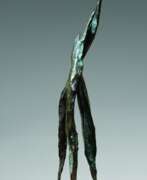

Helen Ashbee is a British artist, sculptor and jeweller. Daughter of renowned architect, designer and social reformer Charles Robert Ashbee.
Helen Ashbee was a textile designer and after the death of her husband, Italian painter Francesco Cristofanetti, she finds her real business in Paris - 'abstract sculpture' and related jewellery, for which she always did many preparatory drawings.


Valentin Assenov is a Bulgarian painter who lives and works in the picturesque city of Pleven.
He studied painting at the Cyril and Methodius University of Veliko Tarnovo. Assenov's canvases are skillful examples of the combination of vivid color and abstract composition inspired by the traditional Bulgarian landscape. His expressive style of painting shows great boldness in the use of color as well as a distinctive style and skill, and his still lifes are literally bursting with color and good humor. Assenov's paintings are part of the collection of the Bulgarian Ministry of Culture and are also widely represented in private collections in Bulgaria, Germany and Turkey.
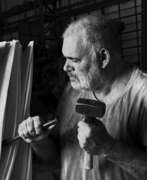

Pablo Atchugarry is a Uruguayan artist, best known for his abstract sculptural art. His works are included in many major collections, both private and public, and he has held more than one hundred solo and collective exhibitions worldwide.
For each sculpture, Atchugarry personally selects an appropriate block and is actively involved in carving it, with minimal help from assistants. He works with white Carrara marble from Tuscany, gray stone from Bardiglio, black from Belgium, and pink from Portugal. Aside from working with stone, he utilizes bronze finished in various patinas, ceramic, and, more rarely, various types of wood.
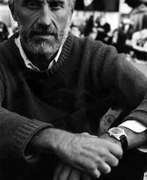

Ugo Attardi was an Italian painter, sculptor and writer. Attardi moved from Genoa to Rome in the early 1950s, where he formed the group Forma 1 together with other artists. His sculpture of Ulysses is now permanently installed in Battery Park in New York
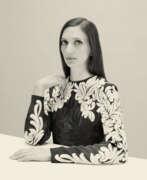

Tauba Auerbach is a visual artist working in many disciplines including painting, artists' books, sculpture and weaving. They live and work in New York.
A life-long student of math and physics, Auerbach's work contends with structure and connectivity on the microscopic to the universal scale.
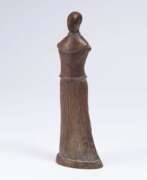

Edgar Augustin was a German painter and sculptor.
Augustin studied sculpture in Münster with Karl Ehlers, then was a pupil of the master Gustav Zeitz in Hamburg. His oeuvre includes partly abstract figurative representations in bronze, wood and plaster as well as paintings, drawings and graphics. Some of Edgar Augustine's sculptures are located in public spaces in Hamburg and other cities.
Edgar Augustin was a member of the Free Academy of Arts in Hamburg and the Special Association of Artists in Germany. In the second half of the 20th century, Augustin was one of the pioneers of figurative wood sculpture and is considered its most important representative.


Sally Michel Avery is an American artist known for her paintings in the style of abstract expressionism. Her paintings are often associated with musical rhythm and melody. She began her career as a landscape painter, and in the 1940s she moved to more abstract forms and color schemes.
Avery was one of the few women recognized as influential in American abstract painting in the mid-20th century. Her work can be seen in museums and private collections around the world.
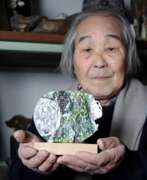

Kenjiro Adzuma (Japanese: 吾妻 兼治郎) is a Japanese abstraction sculptor known for his avant-garde and innovative approach to sculpture and installation art, one of Japan's most important post-World War II artists. He also lived and worked in Italy for many years. He studied sculpture at the Graduate School of Art at the University of Tokyo and at the Brera Academy of Fine Arts in Milan, where he attended Marino Marini's class.
Kenjiro Adzuma was a key figure in the Japanese art movement known as Mono-ha (School of Things) in the late 1960s and early 1970s. Mono-ha artists explored the relationship between natural and industrial materials, often juxtaposing them to create thought-provoking installations.
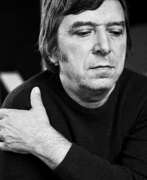

Hermann Bachmann is a German artist, graphic designer and teacher.
Hermann studied at the School of Applied Arts Offenbach am Main and served in the army during World War II. In 1945, Bachmann returned to his hometown and joined the artists of the Halle School. And in 1953 he fled to West Berlin, whose creative atmosphere was closer to him.
In 1957 Hermann Bachmann became a teacher and later a professor at the University of Fine Arts in Berlin, among his students many famous artists. He was a member of the Association of German Artists.


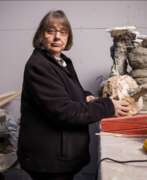

Phyllida Barlow is a British artist. She studied at Chelsea College of Art (1960-63) and the Slade School of Art (1963-66). She joined the staff of the Slade in the late 1960s and taught there for more than forty years. She retired in 2009 and is thus an emerita professor of fine art. She has had an important influence on younger generations of artists; at the Slade her students included Rachel Whiteread and Angela de la Cruz. In 2017 she represented Great Britain at the Venice Biennale.
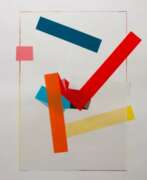

Jill Baroff is a contemporary American artist. She received her BFA from Antioch University, Yellow Springs, OH in 1976, took part in the Artist Seminars Program at the Whitney Museum of Art, New York in 1978 and received MFA from Hunter College, New York in 1981. In her works, she uses a self-structuring methodology in which their visual form is determined by the process by which they are made. Baroff's work reveals the artist's urge to purify, to distill a gesture or an idea until it reaches its most concentrated form. She exhibited in a range of venues, including Pablo's Birthday, New York, Bartha Contemporary, London, England, Galerie Christian Lethert, Brussels, Belgium etc.
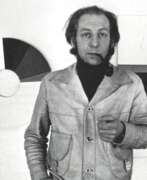

Hermann Bartels is a German artist close to the ZERO movement.
He explored the object nature of painting and moving beyond the two-dimensional surface of the canvas. In the 1950s Bartels worked with thick masses of color and expressive and intuitive strokes, creating white Fleckenbilder. Later he developed the unique technique of strip-sponging, in which he placed colored canvas strips parallel to one another on a white primed canvas. Using this method, Bartels transformed the canvas into a relief that could react more strongly to light and shadow than before. In addition to exploring the three-dimensional picture-object, color also played a crucial role for Bartels, whether in his informal and monochrome painting or in the alternating parallel montages in which he arranged the strips of canvas into a single work.
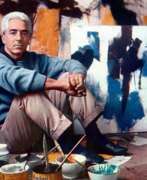

Afro Basaldella was an Italian abstractionist painter, a representative of lyrical abstraction, better known as Afro.
Afro's father and uncle were decorators, his two older brothers became sculptors, and to avoid confusion with surnames, the artist began signing his works with his first name only. Bazaldella trained in Florence, Venice and Rome. Shortly after graduation, his first monographic exhibition was held in Milan.
From 1935, Afro exhibited regularly at the Quadrennale in Rome and the Biennale in Venice. He made frescoes, notably for the Udine Opera House, and mosaics, and tried his hand at painting in a variety of directions. In 1941 he became a lecturer in mosaic painting at the Venice Academy of Fine Arts, and in 1950 he caused a sensation in the United States, and by the mid-1950s Afro's art was world famous.
Afro interpreted the Italian tradition in a modern abstract form that resulted from his painterly studies of color harmony.
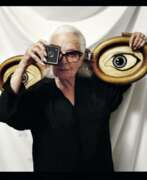

Lillian Bassman was an American photographer and artist.
A magazine art director and fashion photographer, she became famous in the 1940s and '50s for her high-contrast, dreamy portraits of sylph-like models. Bassman's unique graphic style of photography illustrates the feminine mystique and glamour, as well as the boldness of an artist who blurs the lines between fashion photography and fine art. Working as art director for Bazaar magazine in 1945, she helped launch the careers of many of the century's most famous photographers.
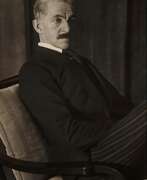

Alexander Georg Rudolf Bauer was a German-born painter who was involved in the avant-garde group Der Sturm in Berlin, and whose work would become central to the non-objective art collection of Solomon R. Guggenheim.
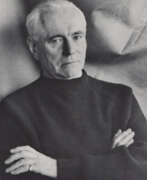

Marcel-Louis Baugniet was a Belgian painter, theorist, furniture designer, creator of posters, costumes and stage sets, and one of the main advocates of the concept of pure plasticity.
He studied painting at the Royal Academy of Fine Arts in Brussels, where he communicated with Paul Delvaux, René Magritte, Victor Servranck and Pierre-Louis Flouquet.
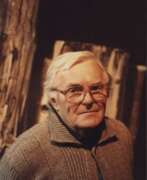

Gerd Baukhage is a German abstractionist painter.
He studied at the Dusseldorf Academy of Art and painted realistic landscapes. Participation in World War II and Soviet captivity strongly influenced the artist's outlook and he moved on to abstract expressive works.
Human suffering and misery in the form of "blockages" and "obstacles" were the theme of Bauckhage's work in the later years of his life. One of his famous creations on the theme of violence and mass murder is the series Execution Machines.
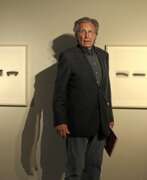

Erwin Bechtold is a German abstract painter and sculptor. He spent some time in Paris, where he had the opportunity to work with Fernand Léger.
Erwin Bechtold was the founder of the artist's group Ibiza 59, whose members sought to create art free of subjective expression. Bechtold's paintings from this period were characterised by minimal geometric forms and the use of a monochromatic colour palette.
Later in his career, Bechtold began experimenting with sculpture, creating large-scale works that explored the relationship between form and space.
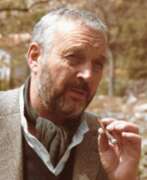

Wolfram Beck was a German sculptor, draughtsman, and painter who worked with wood, steel, bronze, acrylic, and stone. He was trained at the Higher School of Artistic Culture in Berlin, and his work initially included large organic wooden works, portrait busts, and torsos in clay and stone. In the 1970s, Beck created strictly geometric and airy-filigree constructions from mechanical and electronic components that could be moved by actuators or by hand. He also created colorfully accented and fragile looking objects in metal and acrylic. Beck's work can be found in the collections of Axel Springer, Egon Eiermann, and others.
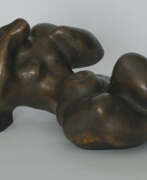

Curt Beckmann is a German painter and sculptor.
He studied at the Düsseldorf State Academy of Art, was a member of the Rhine Secession, Das Junge Rheinland, was a member of the Malkasten Association of Artists, the Association of West German Artists and the Association of German Artists.
Beckmann's work is distinguished by the contemplative quality of the female nude bodies. He gradually moved from naturalistic figures to an almost abstract expressionist representation of them.
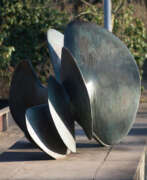

Ulrich Beier was a North German sculptor who enjoyed a considerable reputation in his region of Schleswig-Holstein and Hamburg. From 1945 to 1948 he studied sculpture in his hometown with Christian Brodersen, before continuing his studies in Hamburg with Richard Steffen, a pupil of Aristide Maillol.
Ulrich Bayer has been a member of Gruppe 56 since 1962.
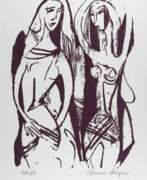

Maria Beine-Hager was a German artist and graphic artist.
She was brought up in a convent, was widowed early and later worked as a Red Cross nurse before beginning her artistic education in postwar Germany under Soviet academy professor Leonid Bordyuk and graphic artist Norbert Hochsiedler. Beine-Hager subsequently attended the Oskar Kokoschka International Summer Academy in Salzburg and established herself as a thoughtful graphic artist and painter at exhibitions at home and abroad.
Maria Beine-Hager's art has both strong religious and political undertones.
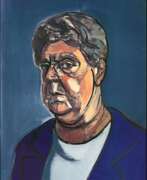

Leland Bell, an American painter born in 1922 and passed away in 1991, is a figure whose artistic journey and output stand as a beacon of individuality and depth in the 20th-century art world. Bell's dedication to painting was profound, shaping a career that remained largely self-taught yet significantly influential. His work, characterized by a passionate engagement with both abstract and figurative painting, represents a unique blend that defied the dominant trends of his time, making him a crucial figure for collectors and art enthusiasts.
Bell's artistic signature is evident in his choice of subjects—still life, portraiture, and figure composition—handled with a distinctive blend of abstract principles and figurative clarity. His paintings are recognized for their bold contour lines, vibrant planes of color, and dynamic compositions, revealing a singular vision that bridges the abstract with the tangible. This approach allowed him to explore the depth of human and thematic elements with an intensity and psychological complexity, particularly seen in his self-portraits and family group scenes, which often carry a mythic quality, elevating everyday existence to the level of allegory.
Significant in Bell’s legacy is his ability to convey the essence of his subjects with a sculptural weight, granting them a presence that is both immediate and timeless. His paintings, such as the "Family Group with Butterfly" (1986-90) and his series of self-portraits, demonstrate a mastery of form and space that invites viewers into a deeply personal yet universally resonant world. Bell's influence extended beyond his canvas through his roles as a teacher and lecturer, where he passionately advocated for the artists he revered, contributing to a rich educational legacy that complemented his artistic achievements.
Bell's works are held in prestigious collections and have been the subject of retrospective exhibitions, such as at the Phillips Collection in Washington, DC, highlighting his enduring impact on American art. His dedication to exploring the nuances of form, color, and composition has left a lasting mark, ensuring his place among the notable artists of his generation.
For collectors and experts in the field of art and antiques, Leland Bell's oeuvre offers a compelling study in the power of painting to convey complex human emotions and narratives. His work remains a testament to the enduring relevance of figurative art in the modern era, and his contributions continue to inspire new generations of artists and collectors alike.
To stay informed about new discoveries, sales, and auction events related to Leland Bell's work, signing up for updates is a practical way to ensure you don't miss out on opportunities to engage with the legacy of this remarkable artist. This subscription is a business-like avenue to keep abreast of events that celebrate Bell’s artistic achievements and offer insights into his profound impact on the art world.
